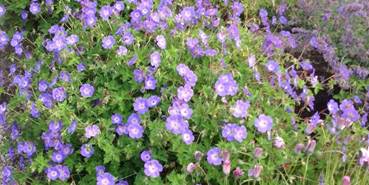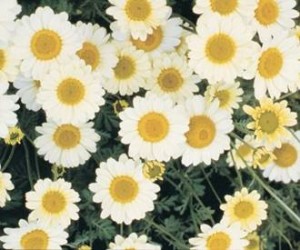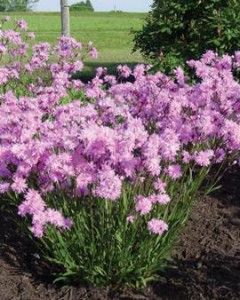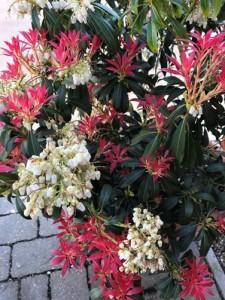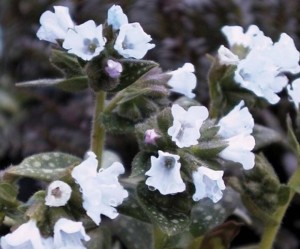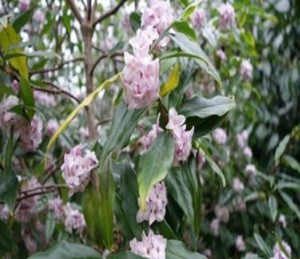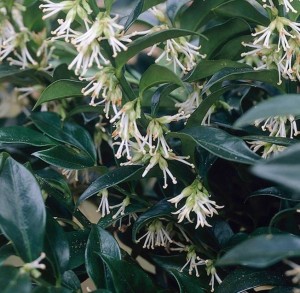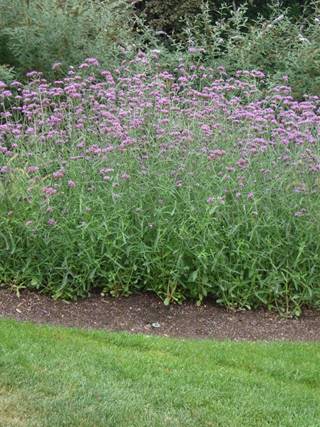
This shorter form of the well-known species bonariensis is compact growing to around 60cm against the species height of up to 150cm.
Ideal as a front of border plant also known as pots.
Good for pollinators.
It was found as a chance seedling growing in a Must Have Perennials Trial Garden in the USA.
After trials, it was found to be consistently shorter but as free-flowering as its parent.
So it is important to look out for chance seedlings and mutations in the garden and in the nursery and during visits to garden centres.
If you do find something you will need to grow it on to see if it stays true to type.
But remember if it’s a mutation from a plant that has Plant Breeders Rights the rights to the plant are with the breeder of the protected plant.
When selecting subjects for plant breeding it’s important to select for colour and height and take into account today’s market trends in plants.
Having a series that has variations in colour, flowering either singles and doubles is good and makes it easier to get a take-up commercially if there are more to follow.
So now is the time to be busy looking at your flowering plants and those that are flowering from your selections and breeding work and making further crosses and selections.
As you can see from the picture above that the new cultivars can be found as well as created from plant breeding and crossing. It’s a long process, it is good to look at plants in your own garden, looking for improvements that may be possible.
Mutations though are spontaneous and may or may not stay true to type.
You see with the Verbena, a shorter flowering plant is more fitting for today’s market and for growers more plants can be transported on a lorry in flower as its shorter so it’s a good grower’s plant.
But we still need taller plants!
As it happens the Verbena has also proven to be a good garden plant.
Keep records of any crossings you make and keep records of location and original plant of any mutations that you find.
Be critical when making a selection and be prepared to be strict when discarding plants.
Pictures are important so get the camera ready to take photos to record your work.
For developing your new plant breeding selection or new plant discovery I can offer full trialling and new plant development service. More details available on my website.
Also, pictures can be taken and stored if needed.
After Britain leaves the European Union, I will still be able to represent breeders in the EU having a connection with a company whose head office is based in the Netherlands.
SEPTEMBER GARDENING
Well here in the East of England autumn shows no sign of coming, the weather is now dry and warm with no rain on the horizon for my area. We are now in a drought with trees dropping leaves likes its autumn.
At night temperatures have been quite low down to around 6°centigrade in this area and lower in some places here in the UK.
Plants to look for in September
- Anemone (Japanese)
- Aster
- Buddleja – all gardens should have one
- Crocosmia
- Dahlia
- Geranium Rozanne®
- Heliopsis
- Helenium
- Penstemon
- Phlox paniculata
- Rudbeckia
- Salvia
- Sedum
- Verbena
- Caryopteris
- Hibiscus
- Hydrangea arborescens
- Roses
You will still need to keep all baskets and tubs watered and checked each day.
Start thinking about autumn bedding
Apply liquid feed regularly once a week is ideal
Look out daily for slugs and snails. Check your local garden centre for the best controls. An idea I have seen is to place an old roof tile on the ground, snails go under here during daytime just turn over and pick them off each day.
Deadheading plants like Dahlia will prolong flowering.
Good time to plant new perennials. They will establish before the winter and get a good start in the spring and be ready to have some resistance to drier conditions as they will be more established.
Perennials dying down or fading can be trimmed back to encourage growth before the winter.
Regular weeding and hoeing, whenever you can, will keep weeds under control. If time is short pull off seed heads this will help to reduce seeded weeds.
Continue to take semi-ripe cuttings now.
It’s a good time now for seed collection, storage is important. Remember cultivars will not come true to type.
You can continue to trim evergreen hedges now.
Look out for Aphids and other pests, black spot on Roses, check with the local garden centre for best controls.
Look out for Vine Weevil damage. Damage shows when plants start to wilt. On inspection, roots will have been badly eaten.
You may also see white c shaped larvae, apply a biological control, plants in containers are unlikely to recover.
Sedums and Geraniums can be badly affected.
Prune climbing roses once flowering is finished.
Continue to mow the lawn regularly, keep edges neat. Still, time to apply weed killer for perennial weeds, use a selective weed killer here.
However, during the dry period, it is better to leave the lawn or at least do not mow too short as it will have a shorter time to recover before autumn sets in.
Seeding and repairing of dead patches can continue now through the month, but you will need to water as weather can still be quite dry.
Apply a fertilizer but do not use summer feeds as these are too high in nitrogen. slow release is best. Do not apply in drought conditions, if using feed and weed avoid getting onto ornamental plantings as it will cause damage.
If you have wildflowers in lawn and want to keep them then do not use feed and weed.
During the dry period if you are watering the lawn do this at night when evaporation is low.
If you have a pond then keep water circulating, using waterfalls and pumps, fountains etc.
Clean filters as needed, remove blanket weed and skim off floating weeds such as duckweed, feed fish as needed.
Remove any debris leaves etc reducing toxin build-up.
In the Greenhouse, open greenhouse and increase ventilation on sunny days, extra shading like shade paint applied to outside may be needed during hot periods, don’t let greenhouse get too hot.
Damp down the floor of the greenhouse on hot days this will control Red Spider mite.
You should be having some good tomatoes and cucumbers now.
Keep greenhouse clean and as crops come to an end remove and clean up,
Citrox is a good cleaning product.
Check for pests like Aphids, red spider mite, whitefly, regularly, biological controls are available to look online.
For vegetables, there is still time to plant leeks from leek plants and onions from sets.
Time to plant broad beans, Garlic, and spring cabbage plants if you can find them, look in the local garden centre.
You can also set up new Asparagus beds,
Time to paint fences and sheds. Carry out any repairs, in the greenhouse replace any broken glass needed before winter, take advantage of the evenings while they are still light.
Take time to relax in the garden at some time each day while it’s still light evenings for barbecues and generally enjoying the fruits of your hard work.
The garden should be an extension of your house, an extra room if you like and it will be looking good.






